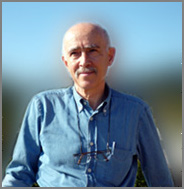Malik Ghallab - Computational Science and Engineering
- Keynote Speech

Chercheur en robotique et intelligence artificielle, Malik Ghallab a apporté des contributions à des problèmes de représentation et de raisonnement sur l’action et le temps, et d’algorithmique de la planification et de l’apprentissage en robotique. Directeur de recherche au CNRS, il est l’auteur de nombreuses publications et de plusieurs ouvrages. Ses travaux lui ont valu en particulier les titres d’ECCAI Fellow et de docteur Honoris Causa de l’université de Linköping. Il a assumé diverses responsabilités scientifiques de programmes de recherche (GDR, PIR), de direction de laboratoire (LAAS-CNRS), de sociétés savantes (AFIA, ICAPS), et de participation à la direction générale d’organisme de recherche (Inria).
- Télécharger les slides (20 Mo) de Malik Ghallab lors du Keynote Speech.
Computational Science and Engineering have dramatically amplified our means for understanding and acting in the world. They correspond to the convergence of three conceptual and practical instruments for observing, stating, formalizing and solving problems, which are
- Computational models, simulation, and high performance computing ;
- Sensing, imaging, and environment instrumentation through swarms of communicating sensors ;
- Massive data processing, visualization and storage ; search, mining, and machine learning to integrate sensor signals and simulation data into meaningful facts, then into new knowledge.
These three instruments converged into exceptional capabilities of integration, of composition from elementary components to complex models and systems, of networking and dissemination. They have reached scales undreamed of before and have revolutionized most fields of knowledge and engineering. They are deeply changing the epistemic foundations and the conceptual and practical tools of scientists and engineers in order to
- Observe, experiment widely in silico, acquire, visualize and process massive data ;
- Represent and abstract these observations into meaningful relations and models ;
- Prototype virtually, design artifacts and take well informed decisions.
Computational Science and Engineering approaches open up new paradigms of investigation in physics, astronomy, chemistry, life sciences, environment sciences, and even in humanities and social sciences. They have a deep impact on the production of research, its organization, its methods of evaluation and its dissemination.
These approaches revolutionize engineering in all areas of production and services. The design of complex systems is now achieved by incremental composition of numerical models of components, permitting formal proofs of properties, realistic simulation, characterization and optimization of designed systems. The new design loop :
- reduces the cost and speed of the traditional engineering and prototyping steps and shortens the design process ;
- allows to numerically explore, in a controlled way, a large number of possible design alternatives, and even designs that appear to be impossible ;
- permits the coordinated contribution of experts from different fields, and even the anarchic contribution of crowd creativity (“crowd-sourcing”) ;
- opens the door to powerful new functional and non functional properties (e.g., monitoring, diagnosis, life cycle) by integrating actuators, sensors, processors and communication components embedded as active and intelligent organs which bring new functionalities and performances to the designed system.
This talk introduces the main components of Computational Science and Engineering. It illustrates their integration and potential impacts within a few areas.




